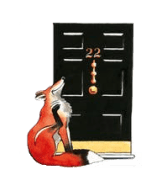The Dunblane massacre took place ten years ago. Its effects on the families of the victims are so terrible that it seems dangerous to speak about them. But there were secondary effects as well. In the aftermath of the horror, the then prime minister, John Major, invited the other party leaders, Tony Blair and Paddy Ashdown, to join him in visiting the town to pay tribute and meet the bereaved. The idea, surely right, was that this should be a grief which united people across politics. Watching the scene on television, I was struck for the first time by Mr Blair’s way of parading feeling, while everyone else, including the bereaved, was showing restraint. He appeared to move about more than other people, contort his face more, upstage those near him. It struck me as something new in our politics, and something unpleasant. At the time people seemed to like it, and similar techniques worked well after the death of Diana, Princess of Wales in 1997.
 Charles Moore
Charles Moore
The Spectator’s Notes | 18 March 2006
issue 18 March 2006






Comments
Join the debate for just $5 for 3 months
Be part of the conversation with other Spectator readers by getting your first three months for $5.
UNLOCK ACCESS Just $5 for 3 monthsAlready a subscriber? Log in